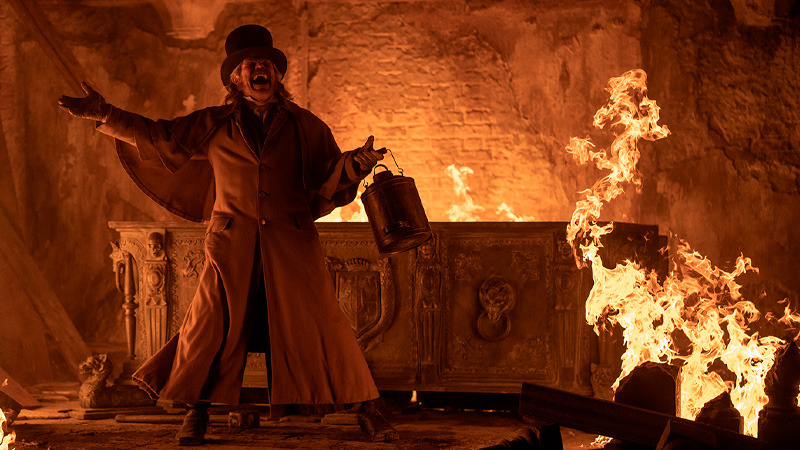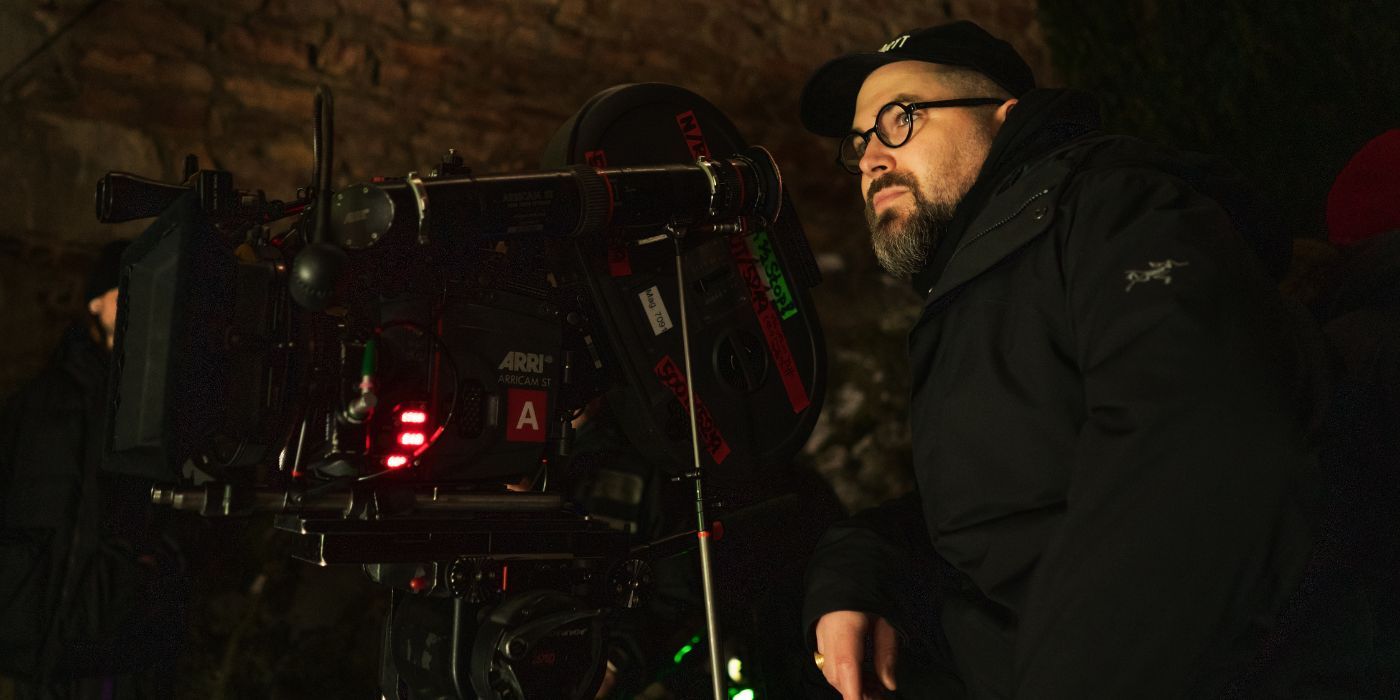Robert Eggers’ Artistic Vision: Robert Eggers Nosferatu

Robert eggers nosferatu – Robert Eggers, the acclaimed director behind “The Witch” and “The Lighthouse,” brings his distinctive visual style and atmosphere to his latest film, “Nosferatu.” Influenced by German Expressionism and other cinematic movements, Eggers’ films are known for their haunting visuals, evocative use of light and color, and unsettling atmosphere that permeates every frame.
Robert Eggers’ Nosferatu is a haunting and atmospheric reimagining of the classic vampire tale, with Willem Dafoe delivering a mesmerizing performance as the titular bloodsucker. The film’s stark visuals and slow-burning tension evoke the works of early German Expressionist cinema, and its exploration of themes of isolation and longing resonate deeply.
While the film is a faithful adaptation of the original novel, Eggers brings his own unique vision to the material, creating a truly unforgettable cinematic experience. Notably, the film’s production design and costumes were heavily influenced by the work of Hungarian artist Barnabas Varga , whose surreal and haunting imagery perfectly captures the film’s unsettling atmosphere.
Lighting and Color
In “Nosferatu,” Eggers employs chiaroscuro lighting to create a sense of stark contrast and heighten the film’s Gothic atmosphere. The interplay of light and shadow accentuates the film’s haunting imagery, evoking a sense of unease and dread.
Robert Eggers’ Nosferatu is a faithful adaptation of the classic horror film, featuring a chilling performance by Willem Dafoe as the titular vampire. The film’s depiction of Count Orlok here is particularly striking, with Dafoe’s sharp teeth and piercing eyes creating an unforgettable image.
Eggers’ attention to detail and commitment to the source material make Nosferatu a must-see for fans of the original film and horror enthusiasts alike.
Eggers also uses color as a powerful narrative tool. The film’s muted, earth-toned palette creates a sense of decay and isolation, while occasional flashes of vibrant color, such as the blood-red of Nosferatu’s eyes, serve to heighten the film’s emotional impact.
Robert Eggers’ “Nosferatu” has been captivating audiences with its haunting visuals and chilling atmosphere. However, for those looking for a more adrenaline-pumping experience, the Portugal vs Turkey stream is an unmissable event. This high-stakes match promises intense competition and the chance to witness some of the world’s top soccer players in action.
But once the game concludes, the return to Eggers’ masterpiece will be all the more profound, leaving viewers with a lasting sense of unease and wonder.
Composition
Eggers’ meticulous attention to composition further enhances the film’s unsettling atmosphere. The use of long takes, extreme close-ups, and off-kilter angles disorients the viewer and creates a sense of claustrophobia.
Robert Eggers’ “Nosferatu” is a captivating cinematic masterpiece that transports viewers to a realm of shadows and ethereal dread. As the tournament draws near, football enthusiasts can delve into the Copa America schedule to plan their viewing experience. The tournament promises thrilling matches, captivating performances, and unforgettable moments.
Amidst the excitement, Eggers’ “Nosferatu” stands as a haunting reminder of the power of cinema to evoke fear and wonder.
The film’s framing also plays a crucial role. Eggers frequently positions characters in the center of the frame, emphasizing their isolation and vulnerability. He also uses negative space to create a sense of emptiness and dread, reflecting the film’s themes of loneliness and despair.
Influence of German Expressionism
Eggers’ artistic vision is heavily influenced by German Expressionism, a cinematic movement known for its stylized visuals, exaggerated performances, and exploration of psychological themes. In “Nosferatu,” Eggers pays homage to classic Expressionist films such as “Nosferatu” (1922) and “The Cabinet of Dr. Caligari” (1920) through his use of stark lighting, distorted sets, and exaggerated acting.
Eggers’ unique blend of Expressionist influences and his own cinematic style creates a truly immersive and unsettling experience for the viewer, cementing his position as one of the most distinctive and visionary filmmakers of our time.
Character Analysis: Count Orlok

Robert Eggers’ portrayal of Count Orlok in “Nosferatu” stands as a testament to the director’s masterful artistry. Orlok is a figure of pure evil, a representation of ancient terrors that haunt the shadows. His characterization builds upon the foundation of previous adaptations while introducing unique elements that make him an unforgettable cinematic icon.
Physical and Psychological Traits
Physically, Orlok is a grotesque creature. His emaciated body, elongated fingers, and piercing gaze exude an otherworldly aura. His sharp teeth and blood-red eyes evoke images of a predatory nightmare. Psychologically, Orlok is a master manipulator, using his charm and charisma to lure victims into his clutches. His cold, calculating demeanor hides a sadistic nature that delights in the suffering of others.
Symbolism and Significance, Robert eggers nosferatu
Orlok’s presence in the film transcends his role as a mere antagonist. He represents the embodiment of ancient evil, a force that preys on the innocent and corrupts the souls of men. His arrival in the village of Wisborg brings with it a wave of darkness and despair, reflecting the fears and anxieties that lurk beneath the surface of society.
Themes and Allegories

Robert Eggers’ “Nosferatu” explores profound themes that resonate with contemporary society, drawing upon the vampire mythos as a potent allegory. The film delves into the isolating nature of fear, the consequences of unchecked desire, and the haunting presence of the unknown.
Isolation and Fear of the Unknown
The film’s depiction of Orlok as an outsider, shunned and feared by the community, mirrors the alienation and isolation experienced by marginalized groups in society. The fear of the unknown, embodied by Orlok, represents the apprehension and prejudice that often accompany encounters with the unfamiliar.
Consequences of Unchecked Desire
Orlok’s insatiable thirst for blood serves as a cautionary tale about the dangers of unchecked desire. The film suggests that unrestrained longing can lead to destructive consequences, both for the individual and society as a whole.
Social and Historical Context
Eggers’ “Nosferatu” draws inspiration from the social and historical context of its time. The film’s themes of isolation and fear resonate with the anxieties of the post-World War I era, a period marked by social upheaval and a sense of disillusionment.
Robert Eggers’ Nosferatu has been highly anticipated by horror fans, and it’s sure to be a chilling experience. While we wait for its release, soccer enthusiasts can check out the copa america schedule to catch all the exciting matches. The tournament features some of the best teams in South America, and it’s sure to be full of drama and excitement.
After catching all the soccer action, be sure to mark your calendars for the release of Nosferatu, which is sure to be one of the most talked-about horror movies of the year.